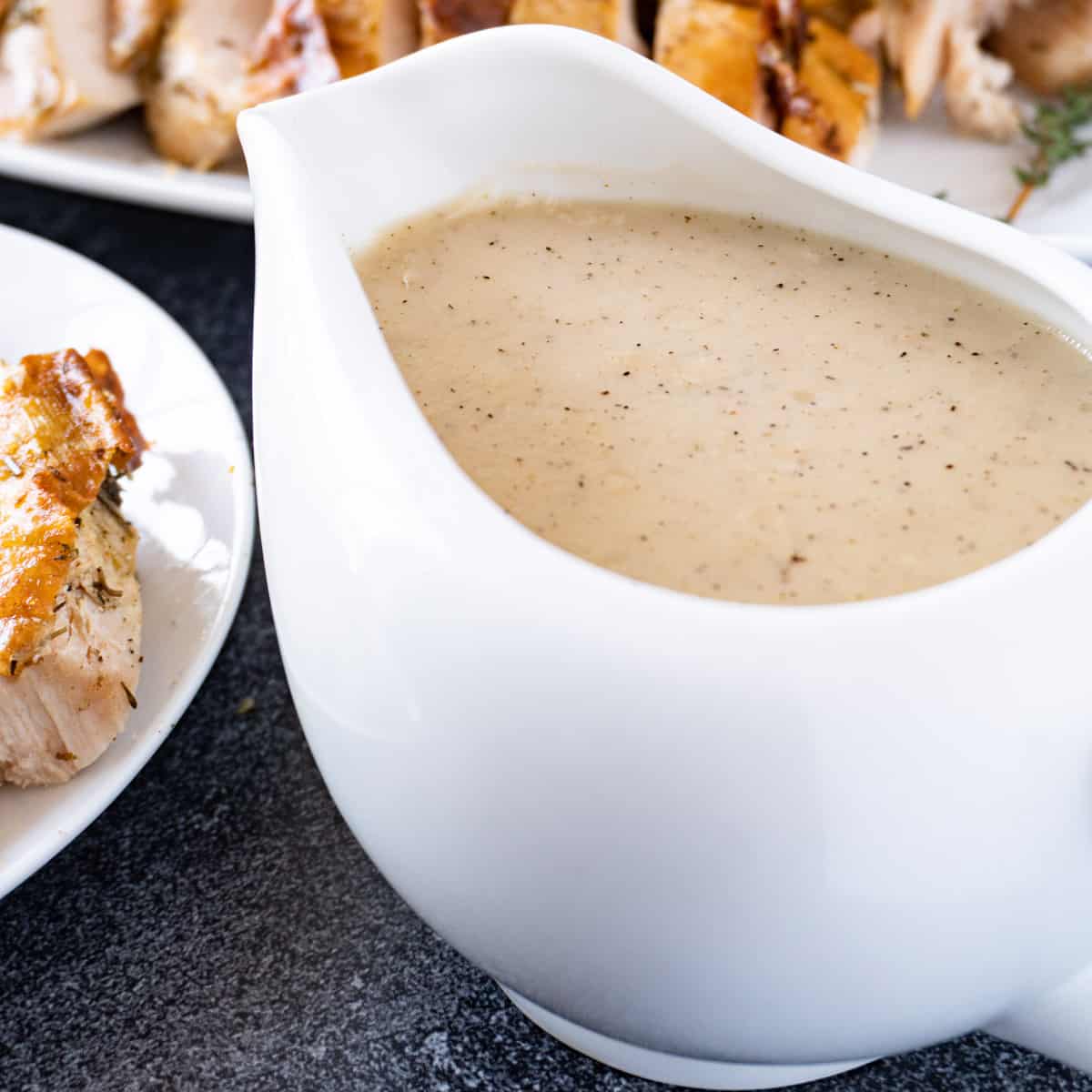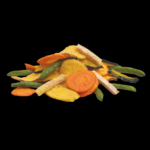Unlock the secrets to crafting luxuriously creamy, soy-free gravies that elevate any dish from simple weeknight meals to elegant holiday feasts. This comprehensive guide dives into the world of soy-free thickening agents, revealing the nuances of each – from the subtle elegance of arrowroot to the robust texture of potato starch. We’ll explore how to achieve a perfectly smooth, lump-free consistency, mastering techniques to prevent scorching and adjusting thickness for your desired outcome. Prepare to transform ordinary meals into culinary masterpieces with gravies that are as visually appealing as they are delicious.
Through a step-by-step recipe and visually rich descriptions, you’ll learn to build a foundational gravy, then effortlessly adapt it to complement an array of dishes. Imagine the rich, golden brown gravy cascading over tender roasted chicken, or the creamy, subtly spiced sauce perfectly coating fluffy mashed potatoes. We’ll guide you through flavor variations, from classic herb-infused gravies to globally inspired creations. Learn the secrets to proper storage and reheating, ensuring your gravy retains its creamy texture and delightful flavor long after it’s made.
Flavor Variations for Different Dishes
Crafting the perfect soy-free gravy involves more than just achieving a creamy texture; it’s about creating a symphony of flavors that beautifully complements your chosen dish. The base recipe provides a delicious foundation, but with a few strategic additions, you can transform it into a culinary chameleon, adapting seamlessly to a wide range of tastes and cuisines. The key is understanding how different herbs, spices, and flavor enhancers interact to create unique and harmonious profiles.
Flavor Enhancements for Various Dishes
The versatility of a basic soy-free gravy allows for extensive customization. By thoughtfully incorporating different flavor profiles, you can elevate simple dishes to gourmet experiences. The following examples demonstrate how subtle changes can dramatically impact the overall taste and presentation.
- Mashed Potatoes: A classic pairing. Enhance the richness of the mashed potatoes with a gravy infused with roasted garlic and a touch of freshly grated nutmeg. The subtle sweetness of the garlic melds beautifully with the earthy nutmeg, creating a comforting and sophisticated flavor combination. Imagine the creamy mashed potatoes, glistening under a blanket of golden gravy, speckled with tiny flecks of roasted garlic.
- Roasted Chicken: For a roasted chicken, consider a gravy featuring a blend of thyme, rosemary, and a hint of lemon zest. The earthy, slightly piney notes of thyme and rosemary perfectly complement the savory chicken, while the lemon zest adds a bright, refreshing counterpoint. Picture the succulent roasted chicken, its skin glistening, surrounded by a pool of aromatic gravy, its color deepened by the herbs.
- Roasted Vegetables: Roasted root vegetables, such as carrots, parsnips, and sweet potatoes, benefit from a gravy with a warm, earthy profile. Infuse the gravy with a combination of smoked paprika, a touch of maple syrup, and a pinch of ground cloves. The smoky paprika adds depth, the maple syrup provides a touch of sweetness, and the cloves contribute a warm, spicy note that complements the natural sweetness of the vegetables. Visualize the vibrant medley of roasted vegetables, glistening with a rich, dark gravy, its aroma hinting at the warm spices within.
Expanding Flavor Profiles with International Influences
Beyond the classic combinations, the world of culinary spices offers endless possibilities for creating unique and exciting gravy profiles. Experimentation is key to discovering your personal favorites.
- Mediterranean: Infuse your gravy with sun-dried tomatoes, oregano, and a splash of red wine vinegar for a bright, tangy Mediterranean twist. Imagine the vibrant red flecks of sun-dried tomatoes scattered throughout the gravy, their intense flavor enhancing the savory base.
- Indian: For an Indian-inspired gravy, incorporate garam masala, a pinch of turmeric, and a squeeze of lime juice. The complex blend of spices in garam masala will add warmth and depth, while the turmeric provides a vibrant yellow hue and subtle earthy flavor. The lime juice adds a zesty finish, balancing the richness of the gravy. Visualize the rich golden-yellow gravy, speckled with the warm brown tones of the garam masala, its aroma hinting at the exotic spices within.
- Mexican: A Mexican-inspired gravy could feature chipotle peppers in adobo sauce, cumin, and a touch of lime juice. The smoky heat of the chipotle peppers adds a unique dimension, while the cumin provides a warm, earthy note. The lime juice adds a refreshing brightness, cutting through the richness of the gravy. Picture the deep reddish-brown gravy, its subtle smoky heat promising a flavorful experience.
Advanced Techniques for Creamy Texture
Achieving a luxuriously creamy soy-free gravy hinges on understanding the role of fat and mastering thickening techniques. The right fat not only contributes to the velvety texture but also enhances the flavor profile of your gravy. Proper roux preparation is crucial for a smooth, lump-free consistency, while understanding how to adjust the thickness mid-process ensures a perfect result every time.
The Role of Fat in Gravy Texture
Fat is the unsung hero of creamy gravy. It acts as an emulsifier, binding the water-based liquid to the starch-based thickener, preventing separation and creating a smooth, cohesive texture. Different fats impart unique flavors and textures. Butter, for instance, lends a rich, nutty flavor and a slightly golden hue. Its delicate flavor complements lighter gravies, such as those served with poultry or fish. Oils, such as olive oil or avocado oil, offer a more neutral flavor profile, making them versatile choices for various dishes. The higher smoke point of oils like avocado oil makes them suitable for higher-heat roux preparation. The choice of fat often depends on the desired flavor profile and the cooking method. For example, a browned butter roux will add a deeper, more complex flavor to a beef gravy than a simple olive oil roux.
Roux Preparation and Its Importance
A roux, a mixture of equal parts fat and flour cooked together, is the cornerstone of many creamy gravies. The cooking process transforms the raw flour’s starchy taste into a smooth, thickening agent. The stages of roux development are visually distinct: Initially, the flour and fat form a paste-like mixture. As it cooks, the mixture gradually darkens. A *blonde roux*, with a light golden color, is suitable for lighter gravies. It has a subtle nutty flavor. A *brown roux*, a deeper amber color, offers a richer, more intense flavor, ideal for heartier gravies. A *dark roux*, almost the color of dark chocolate, provides the most intense flavor but requires careful monitoring to avoid burning. The color of the roux directly correlates to the level of thickening and the depth of flavor imparted to the gravy. A properly made roux is crucial for a smooth, lump-free gravy. Undercooked roux will result in a grainy texture, while overcooked roux can impart a bitter taste.
Adjusting Gravy Thickness
Maintaining the ideal gravy consistency requires attention throughout the cooking process. If the gravy becomes too thick, gradually whisk in warm liquid, such as broth, milk, or water, until the desired consistency is achieved. Conversely, if the gravy is too thin, a simple cornstarch slurry (a mixture of cornstarch and cold water) can be used to thicken it. Whisk the slurry vigorously before adding it to the simmering gravy to prevent lumps. Continue to simmer, stirring constantly, until the gravy reaches the desired thickness. Adding a small amount of roux at a time is another method for thickening a thin gravy, though this requires more careful monitoring to avoid over-thickening. Remember to always add liquids or thickeners slowly and whisk continuously to ensure a smooth, even consistency. The key is patience and gradual adjustments to achieve the perfect creamy texture.
Storage and Reheating Soy-Free Gravy

Proper storage and reheating are crucial for maintaining the delicious creaminess and rich flavor of your homemade soy-free gravy. Improper handling can lead to spoilage, separation, or a grainy texture, diminishing the overall quality of your culinary creation. This section details the best practices for ensuring your gravy remains delectable for as long as possible.
Refrigerator Storage of Soy-Free Gravy
Once your gravy has cooled completely, transfer it to an airtight container. A glass or ceramic container is ideal, as these materials don’t impart flavors or react with the gravy. Ensure the container is completely sealed to prevent air exposure, which can lead to oxidation and alter the flavor and color of the gravy. Refrigerate the gravy promptly to slow down bacterial growth. A tightly sealed container prevents the gravy from absorbing odors from other foods in the refrigerator. Imagine the rich, deep brown color of the gravy remaining vibrant, a testament to proper storage.
Freezing Soy-Free Gravy
Freezing is an excellent method for extending the shelf life of your soy-free gravy. Pour the cooled gravy into freezer-safe containers, leaving a little headspace to allow for expansion during freezing. Freezer bags are also a convenient option, ensuring minimal freezer burn. Label the containers with the date to easily track freshness. The frozen gravy will maintain its creamy texture remarkably well, allowing you to enjoy a perfect sauce even weeks later. Picture the smooth, rich texture thawing perfectly, ready to enhance your next meal.
Reheating Soy-Free Gravy
The best method for reheating gravy is on the stovetop over low heat. Gradually warm the gravy, stirring frequently to prevent scorching and ensure even heating. This gentle approach maintains the creamy texture and prevents lumps from forming. Avoid high heat, which can cause the gravy to separate or become overly thick. Visualize the gravy gently simmering, its rich aroma filling the kitchen as it warms to the perfect temperature. For smaller portions, microwaving is also possible, but use a low power setting and stir halfway through to ensure even heating and prevent splattering.
Shelf Life Guide for Soy-Free Gravy
The following guide provides estimates for the shelf life of soy-free gravy under different storage conditions. These are estimates and may vary depending on factors such as the ingredients used and the cleanliness of the storage container.
| Storage Condition | Shelf Life |
|---|---|
| Refrigerator | 3-4 days |
| Freezer | 2-3 months |
Mastering the art of soy-free gravy making opens a world of culinary possibilities. From the subtle dance of thickening agents to the nuanced flavors that elevate each dish, this journey has equipped you with the knowledge and confidence to create gravies that are not only delicious but also visually stunning. Experiment with different flavor combinations, explore diverse thickening agents, and watch as your culinary creations transform with the velvety richness of your homemade, soy-free gravy. The satisfying aroma, the smooth texture, and the burst of flavor will become hallmarks of your signature dishes. Bon appétit!
Detailed FAQs
Can I make the gravy ahead of time?
Yes, soy-free gravy can be made ahead of time. Store it properly in an airtight container in the refrigerator for up to 3 days or in the freezer for up to 3 months.
What if my gravy is too thin?
If your gravy is too thin, you can thicken it by creating a slurry of your chosen thickening agent with a little cold water and whisking it into the simmering gravy. Continue to simmer until thickened to your desired consistency.
What if my gravy is too thick?
If your gravy is too thick, add a small amount of warm broth or water, whisking constantly, until it reaches your desired consistency.
Can I use different types of milk alternatives?
While the recipes focus on water-based gravies, you can experiment with adding a splash of plant-based milk (like almond or oat milk) at the end for extra creaminess. Keep in mind this may slightly alter the final consistency.


